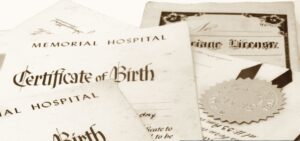10 Common Applications of Translation
Here are some key applications of translation:
- Literary Translation: Literary Translation is the process of translating works of literature from one language to another. It encompasses a wide range of genres, including novels, short stories, poems, plays, essays, and other literary forms. This type of translation is unique in that it not only involves conveying the meaning of the text but also capturing the style, tone, and artistic qualities of the original work.
- Scope: Novels, poems, plays, essays, and other literary works.
- Requirements: Creativity, understanding of literary devices, and the ability to preserve the author’s style and tone.
- Challenges: Maintaining the artistic quality and cultural nuances of the original work.
- Technical Translation:Technical Translation involves translating documents and materials related to technical fields such as engineering, information technology, manufacturing, and science. This type of translation requires a deep understanding of both the subject matter and the specific terminology used within the field. The primary goal is to produce clear, accurate, and precise translations that convey technical information effectively.
- Scope: Manuals, user guides, product specifications, software documentation, engineering documents.
- Requirements: Precision, technical knowledge, familiarity with industry-specific terminology.
- Challenges: Ensuring accuracy and clarity, avoiding any misinterpretation that could lead to misuse of products or technology.
- Legal Translation:Legal Translation is the process of translating legal documents and texts from one language to another. This type of translation is critical for legal practitioners, businesses, and individuals operating in multilingual environments, ensuring that legal agreements, regulations, and rights are clearly understood across different languages and jurisdictions.
- Scope: Contracts, laws, patents, court documents, legal opinions, and agreements.
- Requirements: Knowledge of legal terminology and systems, attention to detail, and a thorough understanding of legal concepts.
- Challenges: Maintaining the exact meaning of legal terms and ensuring that the translation is legally binding in the target language.
- Medical Translation:Medical Translation is the process of translating medical documents, texts, and communications from one language to another. This type of translation is crucial for healthcare professionals, researchers, and patients in multilingual contexts, ensuring that medical information is accurately conveyed and understood across different languages and cultures.
- Scope: Medical records, research papers, pharmaceutical instructions, medical devices documentation, patient information leaflets.
- Requirements: Medical expertise, understanding of medical terminology, confidentiality.
- Challenges: Ensuring patient safety by providing precise and unambiguous translations, understanding complex medical concepts.
- Financial Translation:Financial Translation is the process of translating documents related to finance, accounting, and economic activities from one language to another. This type of translation is crucial for businesses and financial institutions operating in global markets, ensuring accurate communication of financial information and compliance with local regulations.
- Scope: Financial reports, balance sheets, audits, insurance documents, economic analyses.
- Requirements: Knowledge of financial and economic terminology, accuracy, understanding of financial regulations and standards.
- Challenges: Maintaining the integrity of financial data and ensuring that the translated document complies with local financial regulations.
- Marketing Translation: Marketing Translation is the process of translating marketing materials and communications from one language to another. This type of translation focuses on adapting the content to resonate with the target audience while ensuring that the marketing message remains effective and culturally appropriate. Marketing translation goes beyond mere word-for-word translation; it involves localizing the message to suit the preferences, customs, and cultural context of the target market.
- Scope: Advertisements, brochures, websites, promotional materials, product descriptions.
- Requirements: Creativity, cultural awareness, understanding of the target market, localization skills.
- Challenges: Adapting content to be culturally relevant and appealing to the target audience, while maintaining the original marketing message.
- Multimedia Translation: Multimedia Translation refers to the process of translating and adapting various forms of multimedia content, including videos, audio, animations, and interactive digital content, to make them accessible to speakers of different languages. This type of translation is essential in a globalized world where content is consumed across borders and cultures. It encompasses not only the translation of text and dialogue but also considerations of cultural context, visual elements, and technical formats.
- Scope: Subtitles, dubbing scripts, voice-overs, video games, apps.
- Requirements: Synchronization with audiovisual elements, cultural adaptation, technical skills.
- Challenges: Ensuring that the translation fits within the timing constraints of the original media, making it sound natural and engaging.
- Scientific Translation: Scientific Translation involves the translation of scientific documents, research papers, and technical materials from one language to another. This type of translation is essential in the global scientific community, where collaboration and knowledge sharing are vital for advancements in various fields, including medicine, biology, chemistry, physics, engineering, and environmental science.
- Scope: Research papers, academic articles, theses, scientific journals, conference proceedings.
- Requirements: Expertise in the specific scientific field, understanding of scientific terminology, precision.
- Challenges: Accurately conveying complex scientific concepts and data, maintaining the integrity of the original research.
- Localization: Localization is the process of adapting a product, service, or content to meet the linguistic, cultural, and functional requirements of a specific target market or audience. While translation focuses primarily on converting text from one language to another, localization encompasses a broader scope, including cultural nuances, regional preferences, and technical considerations. It is commonly used in various fields, such as software development, marketing, e-commerce, gaming, and multimedia.
- Scope: Software, websites, video games, apps, and other digital content.
- Requirements: Cultural adaptation, understanding of local customs and preferences, technical skills.
- Challenges: Adapting the content to suit the linguistic and cultural context of the target audience, ensuring functionality and usability in the target language.
- Business Translation: Business Translation is the process of translating various types of business documents and communications from one language to another. It involves more than just converting words; it requires an understanding of business terminology, industry-specific jargon, and the cultural nuances of both the source and target languages. Business translation is essential for companies operating in global markets, as it ensures clear and effective communication across different languages and cultures.
- Scope: Business correspondence, reports, proposals, internal communications, corporate websites.
- Requirements: Understanding of business terminology, clear and concise language, cultural awareness.
- Challenges: Maintaining professionalism and clarity, adapting to the corporate culture of the target audience.
Conclusion on the Applications of Translation
Translation is a vital process that facilitates cross-cultural communication, international business, global healthcare, and more. Its applications are diverse and span numerous industries, each with its own unique requirements and challenges. Effective translation helps bridge language barriers, allowing for the exchange of ideas, knowledge, and commerce on a global scale.
Each application of translation demands specific expertise and skills to ensure that the translation is not only accurate but also effective in conveying the intended message to the target audience.





